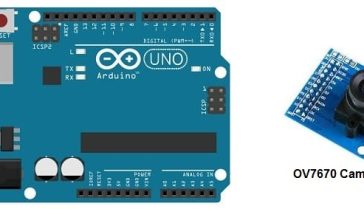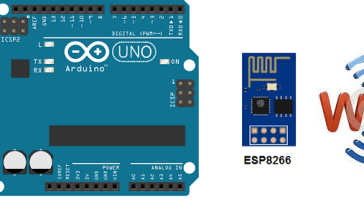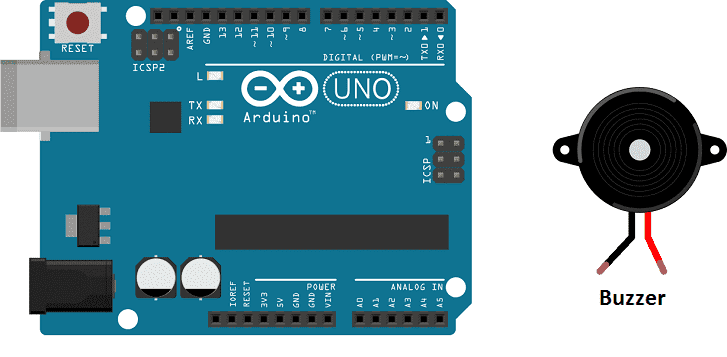

Purpose of this tutorial:
A buzzer is a simple device that produces an audible sound when a current is passed through it. To use a buzzer with Arduino, you will need to connect the buzzer to your Arduino board and write code to control the buzzer.
Here are the basic steps to get started:
- Connect the buzzer to your Arduino board: The buzzer has two pins (positive and negative), which you will need to connect to the corresponding digital pins on your Arduino board.
- Write code to control the buzzer: You will need to use the digitalWrite() function in your Arduino sketch to control the buzzer.
The purpose of this tutorial is to make a buzzer sound with Arduino.
Necessary components
Arduino UNO

The Arduino UNO is a microcontroller board based on the ATmega328P. It has 14 digital input/output pins, 6 analog inputs, a 16 MHz quartz crystal, a USB connection, a power jack, an ICSP header, and a reset button. It is the most popular and widely used board among the Arduino boards.
The Arduino UNO can be programmed using the Arduino programming language, which is based on C++. It uses a simple and intuitive programming environment, making it easy for beginners to get started with microcontroller programming.
The Arduino UNO can be connected to various sensors and actuators to control different devices and perform different tasks. For example, it can be used to control motors, read data from sensors, display information on an LCD screen, and communicate with other devices via serial communication protocols such as I2C and SPI.
The Arduino UNO can also be powered by a USB cable or an external power supply, making it easy to use in a wide range of projects and applications. It’s compatible with a wide range of shields (expansion boards) that adds functionality to the board, such as Ethernet, WiFi, and Bluetooth, and it’s widely supported by a strong and active community, which provides a lot of tutorials, examples and libraries to help users to get the most of the board.
buzzer
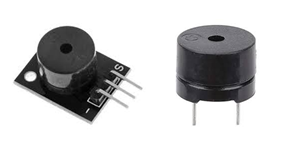
A buzzer is an electronic device that produces an audible sound when a current is passed through it. Buzzers come in various shapes and sizes, and can be driven by different types of signals such as digital or analog. Some buzzers are piezoelectric, which means that they generate sound by mechanical deformation of a crystal in response to an applied voltage. Other buzzers are magnetic, which means that they generate sound by vibrating a diaphragm in response to an applied current.
Buzzers can be used in a wide variety of applications such as alarms, timers, doorbells, games, and many more. They are simple to use and can be controlled by an electronic circuit such as an Arduino board or a microcontroller. To use a buzzer, you need to connect it to a power source and a control circuit, which will provide the necessary signals to turn the buzzer on and off, or to change the frequency or duration of the sound.
In summary, a buzzer is an electronic device that generates an audible sound when a current is passed through it, they are simple and easy to use, with a wide range of applications, and can be controlled using an electronic circuit such as an Arduino board or a microcontroller.
connecting wires

Connecting wires are used to connect various components in an electronic circuit. They allow for the transfer of electricity, data, or signals between different devices and components.
When connecting wires to an Arduino or other microcontroller, it is important to pay attention to the correct pinout. The pinout refers to the arrangement of pins on the microcontroller and the corresponding function of each pin. The Arduino pinout can be found in the documentation provided by the manufacturer, or in various resources available online.
test plate

A test plate, also known as a test jig, is a device used to test electronic circuits and components. It is a board or plate that has been designed to hold and connect various components and devices in a specific configuration, allowing for the easy testing and measurement of their performance.
A test plate can be used to test various types of electronic circuits and components, such as microcontrollers, sensors, and actuators. It typically includes connectors and sockets for connecting wires, power supply and measurement devices such as multimeters, oscilloscopes, and power supplies.
Mounting:
The assembly consists of connecting the terminal (+) of the buzzer to the digital terminal N°0 and the terminal (-) to the GND of the Arduino.
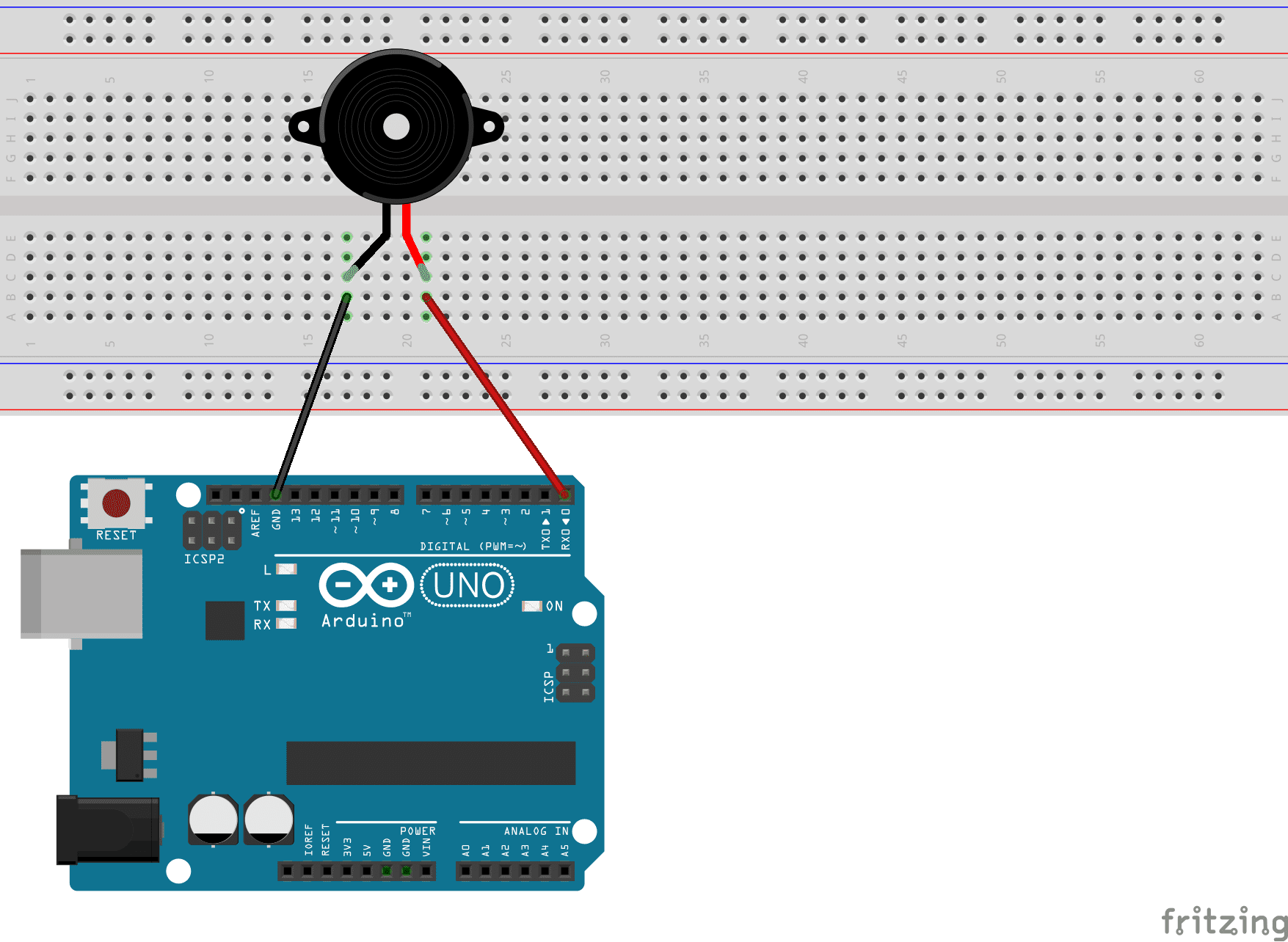
Programme
|
1 2 3 4 5 6 7 8 9 10 |
void setup(){ pinMode(0,OUTPUT); //sets the number 0 digital input of the Arduino board in output mode } void loop(){ digitalWrite(0,HIGH); // BUZZER RINGS } |

